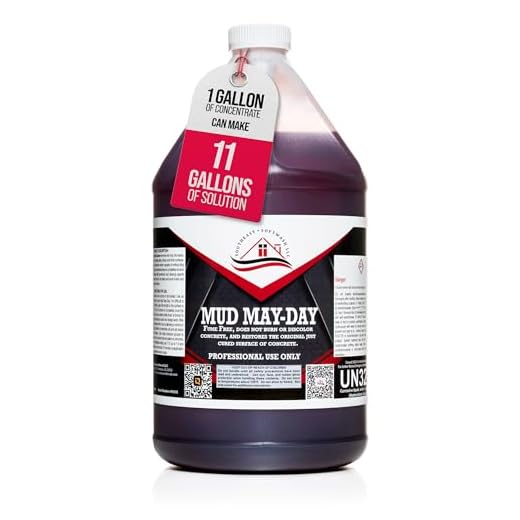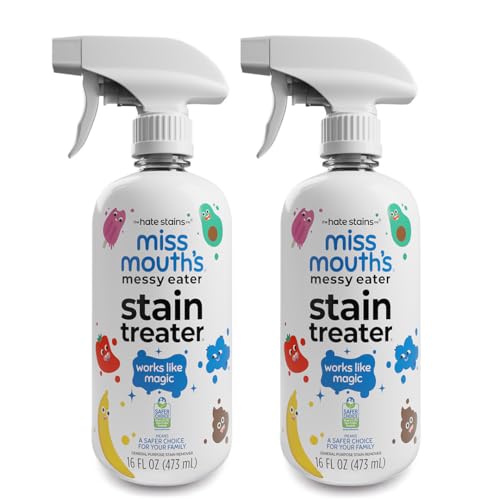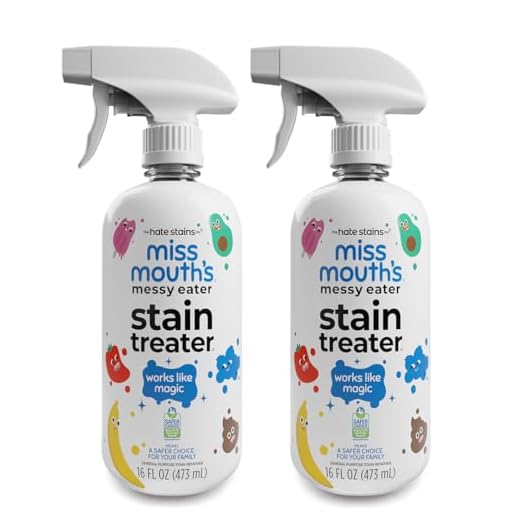

Immediate attention is key. Blot the stain gently with a clean cloth to absorb excess liquid, avoiding any rubbing which may set the blemish deeper into the fibers.
Once blotted, sprinkle a generous amount of salt or baking soda on the affected area. These substances can help lift the pigment from the material. Allow it to sit for about 10 to 15 minutes before rinsing with cold water.
If the stain persists, create a mixture of equal parts dish soap and hydrogen peroxide. Apply this solution to the stain, letting it penetrate for at least 30 minutes. Afterward, launder the fabric as per the care instructions, using the hottest water safe for the material.
For stubborn marks, consider using a stain remover specifically designed for tough blemishes. Follow the manufacturer’s instructions carefully for optimal results.
Always remember to check the fabric care label before applying any treatment, ensuring the chosen method is safe for the specific type of material.
Assessing the Stain: Identifying Fabric Type
Begin with examining the garment closely. Determine if the material is natural, such as cotton or silk, or synthetic like polyester or nylon. Natural fibers often absorb liquids more readily, making them more susceptible to permanent damage from pigments.
For instance, cotton is generally more forgiving and can withstand various cleaning methods. In contrast, silk requires a gentle approach due to its delicate nature. Avoid harsh chemicals that could lead to discoloration or fabric degradation.
Next, check for care labels. These provide guidance on washing temperatures and suitable detergents. Fabrics labeled as “dry clean only” necessitate professional handling to prevent further harm.
Lastly, assess the colorfastness. Test a small, inconspicuous area with a damp cloth to see if any dye transfers. This step is crucial, particularly for brightly colored or patterned fabrics, as it indicates how aggressive the cleaning process can be.
Immediate Actions: What to Do Right After Spilling
Blot the affected area with a clean cloth or paper towel to absorb as much of the liquid as possible. Avoid rubbing, as this can push the stain deeper into the fabric. If available, sprinkle salt or baking soda over the stain. These substances can help absorb the remaining moisture and prevent further penetration of the pigment.
After blotting, rinse the fabric with cold water from the back of the stain. This helps to push the wine out instead of further embedding it. If the garment is machine washable, check the care label for washing instructions. For specific scenarios, such as cleaning footwear, refer to can you put walking boots in the washing machine tips and advice.
Utilizing Household Items
Common household items can be effective in managing stains. A mixture of white vinegar and dish soap can be applied to the area. Let it sit for about 30 minutes before rinsing. Alternatively, club soda is an excellent option; pour it directly onto the stain and blot continuously until the mark diminishes.
Preparing for Laundry
After treating the stain, launder the item as per its care instructions, but refrain from using hot water, as it can set the stain. Always air dry the garment until confident that the stain has been removed. If needed, repeat the treatment process before drying.
Choosing the Right Cleaning Solution for the Stain
Selecting an appropriate cleaning agent is crucial for effectively addressing the blemish. The choice largely depends on the fabric type and the age of the mark.
For synthetic materials, opt for a mixture of dish soap and hydrogen peroxide. Combine:
- 1 tablespoon of dish soap
- 2 tablespoons of hydrogen peroxide
Apply this solution directly onto the stain, gently working it in with a soft cloth.
Natural fibers, such as cotton or linen, respond well to a paste made from baking soda and water. Combine:
- 1/4 cup of baking soda
- 2 tablespoons of water
Spread the paste over the blemish and let it sit for 30 minutes before rinsing with cold water.
For delicate fabrics like silk or wool, use a specialized stain remover designed for such materials. Always perform a patch test on an inconspicuous area to ensure no damage occurs.
Consider enzyme-based cleaners for older stains. These products break down organic materials and can be very effective.
Finally, always follow the manufacturer’s care instructions for the specific material, as this can prevent further complications during the cleaning process.
Stain Removal Techniques: Step-by-Step Guide
First, gather the necessary materials: a clean cloth, cold water, white vinegar, dish soap, and baking soda. Begin by blotting the affected area gently with a cloth to absorb any remaining residue. Avoid rubbing, as this can spread the discoloration further.
Next, mix equal parts of white vinegar and dish soap in a bowl. Apply this solution to the stain using a clean cloth, dabbing gently. Allow it to sit for about 30 minutes to penetrate the fabric.
Afterward, rinse the area with cold water. If the stain persists, create a paste using baking soda and water. Apply this paste onto the stain, gently working it in with your fingers. Let it dry completely, then brush off any residue.
Finally, launder the item as per the care instructions on the label. Check the item before drying; if the mark remains, repeat the previous steps. Avoid putting the garment in the dryer until the stain is fully removed to prevent setting it.
Using Household Items: DIY Solutions for Stain Removal
A mixture of baking soda and water creates an effective paste. Apply it directly onto the stain and let it sit for about 30 minutes before rinsing with cold water. This method helps lift the pigment from the fibers without damaging them.
Vinegar and Dish Soap
Combine equal parts white vinegar and dish soap. Apply this solution to the affected area with a clean cloth, gently blotting the stain. Rinse thoroughly with cold water after 10 minutes to remove any residue.
Club Soda
Pour club soda directly onto the stained area. The carbonation helps to break down the marks. Blot with a clean cloth until the stain begins to lift, then rinse with cold water.
Hydrogen peroxide is another option for tougher stains. Mix it with equal parts water and apply it carefully to the fabric. Always test on a hidden area first to ensure it won’t discolor the material.
For delicate fabrics, a few drops of baby shampoo mixed with water can serve as a gentle cleaner. Blot the stain, rinse, and repeat if necessary.
Utilizing these common household items allows for effective treatment of stubborn stains while minimizing the risk of damage to your fabrics.
When to Seek Professional Help for Stubborn Stains
Consult a cleaning expert if home remedies fail after multiple attempts. Persistent blemishes, especially on delicate fabrics like silk or wool, often require specialized treatment. Look for cleaners with experience in dealing with specific types of marks.
Consider professional services in the following situations:
| Situation | Recommended Action |
|---|---|
| Stain remains after DIY efforts | Contact a stain removal specialist |
| Fabric is high-end or vintage | Seek expert advice for preservation |
| Multiple stains from various sources | Utilize a professional cleaning service |
| Stains set in for an extended period | Engage with a textile care professional |
Taking immediate action can sometimes help, but if the problem persists, entrusting the item to specialists ensures the best chance of restoration without further damage. Always inquire about their methods and experience with similar cases.
Preventing Future Stains: Tips for Wine Lovers
Always consider using stain-resistant fabrics for clothing when attending events involving beverages. Fabrics like polyester or blends with nylon can significantly reduce the chance of permanent marks.
Invest in a quality wine spill kit. These kits often contain absorbent materials and cleaning solutions specifically designed for tackling spills quickly.
During gatherings, keep a designated area for pouring and serving. This minimizes the risk of accidental spills on clothing.
Encourage using darker-colored table linens. They can effectively disguise minor splashes and accidents, making it less likely for anyone to feel self-conscious about a small mishap.
Consider wearing an apron or a protective covering while serving. It’s a practical measure that can save favorite garments from unexpected splatters.
Always store bottles upright in a cool, stable environment. This prevents potential leaks and minimizes the risk of spills when handling.
Opt for larger wine glasses that provide a wider opening and reduce the likelihood of overfilling. This can help avoid accidental overflows during pouring.
Educate guests on proper pouring techniques. A gentle tilt when filling glasses can significantly decrease the chances of over-pouring and subsequent stains.
Lastly, regularly treat fabrics with a protective spray designed to repel stains. This proactive approach can save time and effort in the long run.








